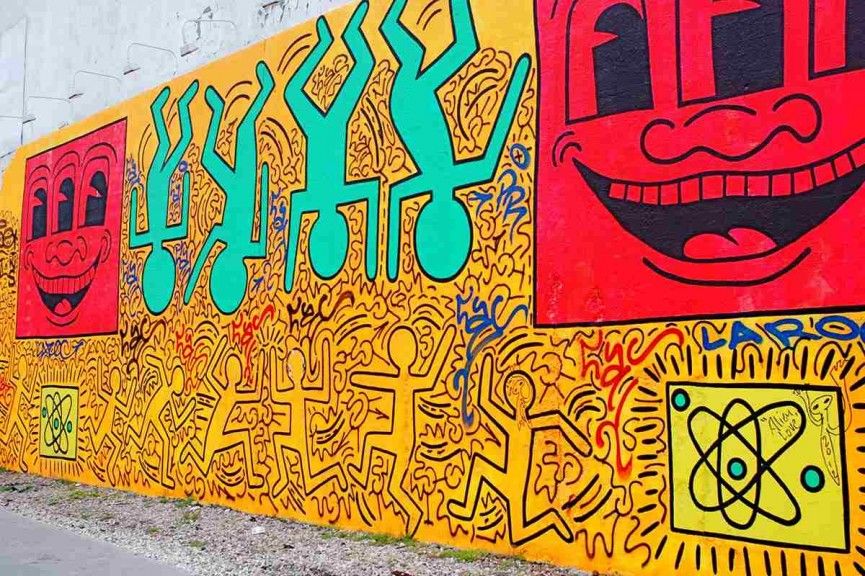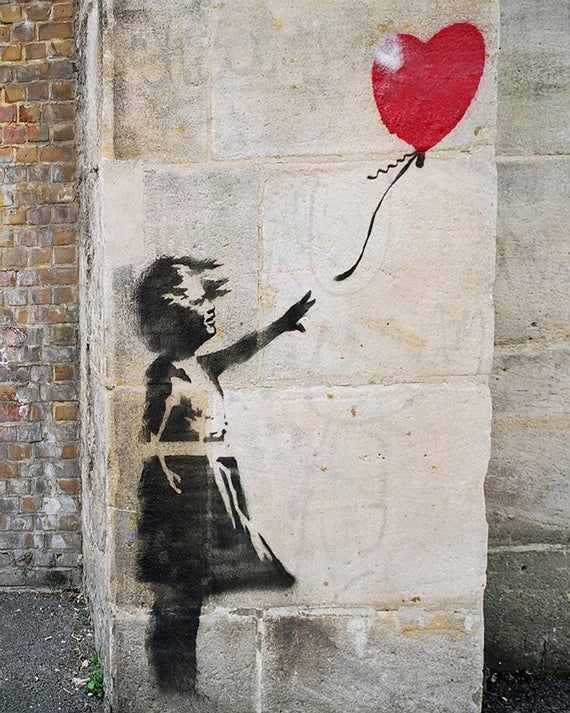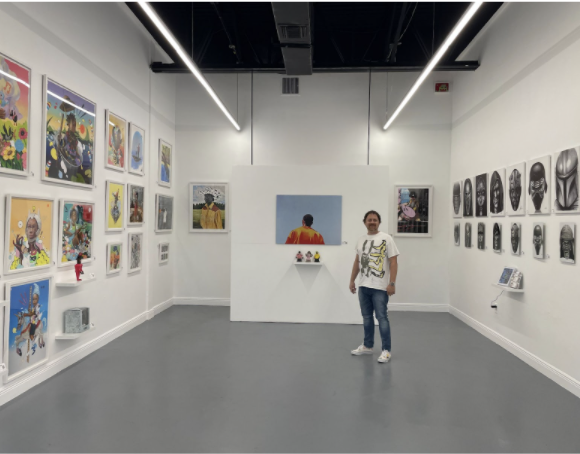Graffiti culture is alive and thriving in New York, which is home to some of the best mural and street art spots. There’s the Bushwick Collective in Brooklyn, which boasts over 50 colorful murals done by artists from all over the world. Meanwhile, the 100 Gates Project, which started at the Lower East Side, has expanded over to East Harlem and Staten Island as NYC artists and merchants continue to work together to create original street art on roll-down security gates.
The popularity of graffiti has even resulted in some street artists being recognized by art institutions, as well as finding success showcasing their work in galleries and in more unconventional locations. Pieces by present-day street art mavens such as KAWS and Banksy have become increasingly in demand, and their success has inspired new artists to consider taking this path. It’s clear to see that graffiti and street art are here to stay and have found their place in today’s culture. Here’s a look at the rise of street art and the future of this vibrant art form.
Street Art Takes Root in NYC
The 80s were an iconic time for unconventional and subversive art in New York City, and creativity was showcased everywhere, from canvases to walls, public spaces and even human bodies. During this decade, tattoo artists Thom De Vita, Brooklyn Blackie, and Tony D’Annessa operated underground tattoo parlors in the city, even after officials banned tattooing. Customers would emerge from their shops sporting various intricate patterns on their body and it inspired other tattoo artists to open secret shops of their own.
Meanwhile, the NYC graffiti scene was also in full bloom, as artists such as Jean-Michel Basquiat and Keith Haring started using public places all over the city to showcase their works. Eventually, the art world began to take notice of their genius. Basquiat’s works were showcased at Annina Nosei’s gallery in Soho, while Haring made sure that the public could easily get their hands on his art by selling shirts and other items featuring his work. Some of haring’s art can be found today at New York’s MOMA and Whitney Museums, while Basquiat’s paintings can be viewed at the Soho Contemporary Art Gallery. And, of course, their works are frequently on display in museum collections around the world.
Street Art as Collectibles
Today, pieces made by famous street artists have become status symbols among collectors. Banksy’s works are known to fetch millions and are highly sought after by the elite. Just remember when Banksy’s “Girl and Balloon” image made waves and in 2018 when it self-destructed after just being sold for over $1.2 million at Sotheby’s. Meanwhile, Brian Donnelly, known in the art world as KAWS, started out as a graffiti artist in NYC and now has ongoing licensing collaborations with Uniqlo, Dior Homme, and Bounty Hunter. With the latter, Donnelly launched a line of toys that are highly collectible and finding homes with celebrities such as RM and J-Hope of BTS, Pharrell Williams, and Justin Bieber among many.
In today’s art culture, urban art is a new genre developing influenced by elements and inspirations of both graffiti and street art into works more suitable for the home and other interiors. As the new genre of street art becomes more accessible to everyone, it is expected that more street artists will be making their work available for public consumption through collaborations with galleries, museums, and brands that will showcase their work. Though there might be debates about whether street and urban art will have the same impact on a $50 t-shirt as it does on a wall in NYC, it’s evident that it’s an effective way to introduce art to a younger audience as it challenges gatekeeping within the art world. Whether it’s on a brick wall in Brooklyn or displayed at the best museums in the world, street art and it’s new sick-kick urban art, will live on and will remain an important part of today’s art scene.
About the Author: Karoline Gore is a freelance writer, art enthusiast and self-confessed tattoo junkie. When she’s not writing about her favorite tattoo designs, she loves exploring the countryside in her native Maine with her dogs Ralph and Bella.













ron
19 July
This is the way we now can see art. We can walk on the street and look. Our experience is there at least. We need to spend the time to do it. Love it. Or hate it. It is available to seeing it now. And for the time. Eventually the galleries, museums and events will bring it to our attention. But right now, it is for us.